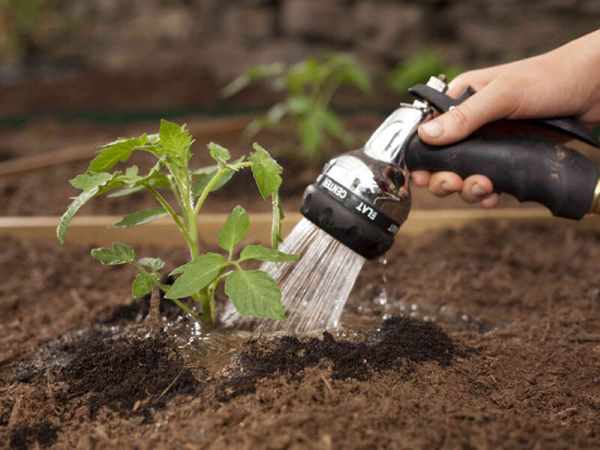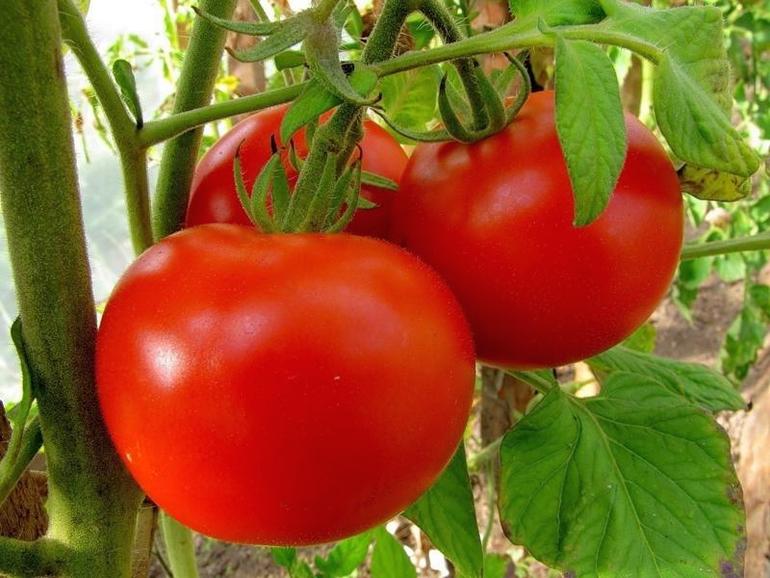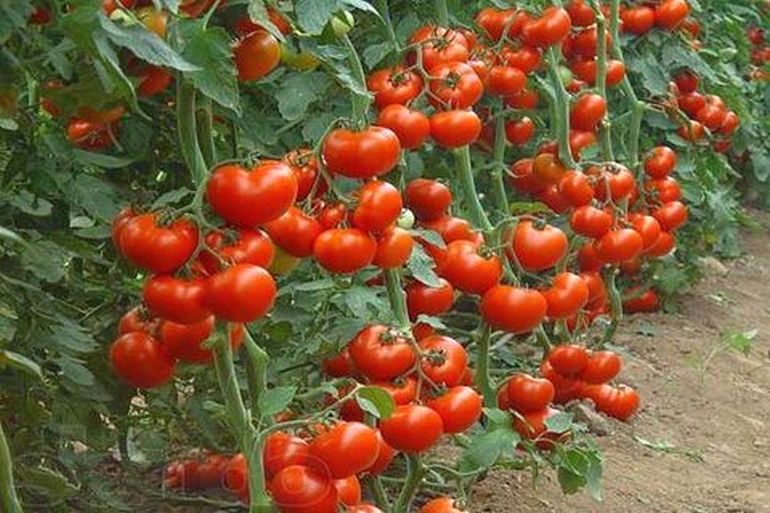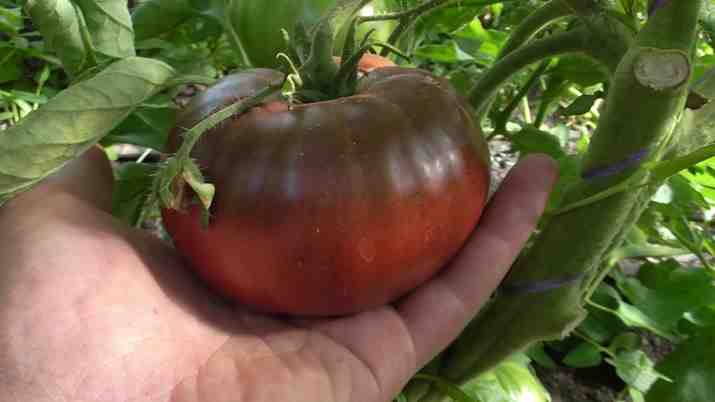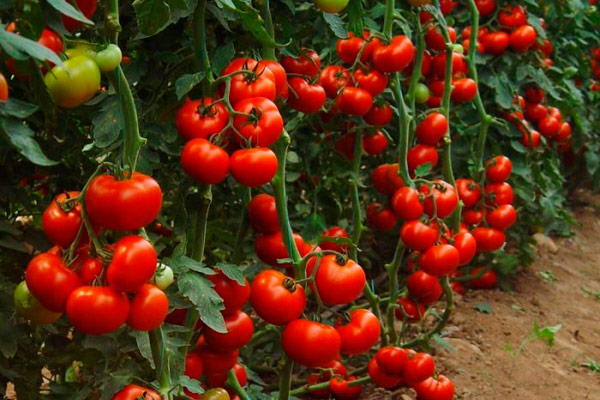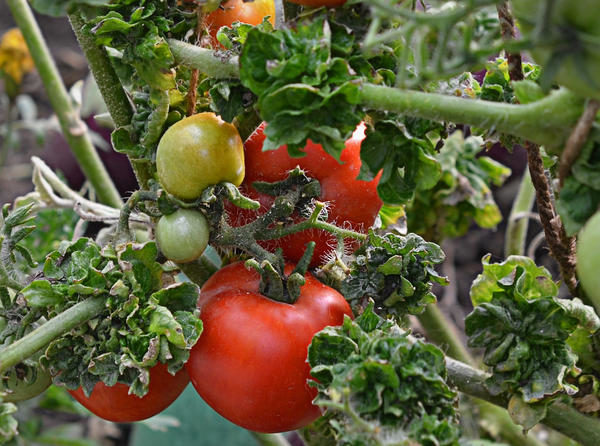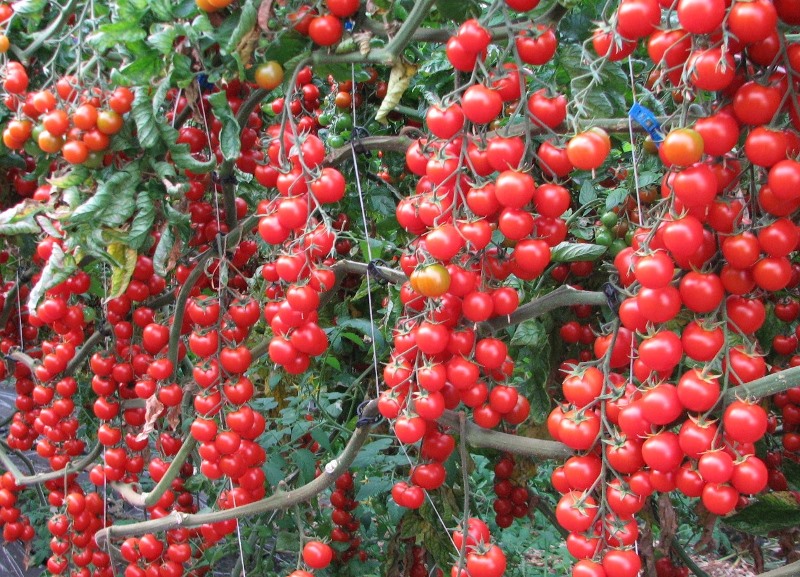Content:
Tomatoes are rightfully considered to be one of the most common vegetable crops in orchards and vegetable gardens. They have a wide range of minerals, organic acids and vitamins. The fruits are juicy and nutritious, but at the same time they are dietary. Their distribution in cooking knows no bounds. This is used raw, and as part of hot dishes, and a variety of blanks for future use.
Currently, the abundance of tomato varieties bred by breeders is striking in diversity. Each variety has a certain set of qualities that tilt the choice of vegetable growers in one direction or another.
The Yamal tomato spread from South American forests, gaining wide popularity only in the 18th century. In 2007, the Yamal variety tomatoes were registered in the State Register under the trade name Yamal 200.
Yamal tomato: characteristics and description of the variety
Description of Yamal tomatoes should start with the appearance of the bush. The variety forms compact, medium branching, strong, determinate bushes, 35-50 cm in height. This size makes the described variety versatile both for growing in a garden and for cultivation on windowsills in an apartment environment. The low growth and strength of the stem allows it to survive changeable weather and strong winds.
Leaves on a stem are medium in size, slightly corrugated, can have any shade of green. The bush looks neat, resembling an ornamental plant in appearance. The inflorescences are simple, the stalk with a characteristic articulation. Each inflorescence can have up to 10 flowers, 6-8 of which are usually tied into fruits.
The variety is ultra-early ripening, fruit ripening occurs 90-110 days after planting. Such massive ripening allows the fruits to be used for planning harvesting for the winter.
The color of the unripe fruit is light green, round or flat-round in shape. Weak ribbing may be observed. Ripe fruits have a rich red color, juicy pulp with more than four seed chambers. The average weight of fruits is 80-110 g, but the first ripe fruits are distinguished by an increased weight - 160-190 g. The yield of the variety is quite high and amounts to 4.6-8.6 kg / sq. M. Due to their small size, it is convenient to use Yamal tomatoes for whole-fruit harvests for the winter.
Features of agricultural cultivation
The standard type of bush does not require pinching and tying, this property makes the variety especially attractive for novice gardeners. Yamal tomatoes are described as light-loving, which should be considered when planning planting. The south side of the garden works well.
Sowing seeds for seedlings must be done 50-60 days before planting in open ground.
Before planting, to increase the resistance of plants to diseases, it is worth preparing:
- Initially, you can separate suitable seeds from the total mass using salt water (1 tablespoon per glass): throw out the floating ones, dry the remaining ones at the bottom;
- To protect against pests and diseases, immerse the collected seeds in a 2% peroxide solution for 8 minutes or in a 1% potassium permanganate solution for 15-20 minutes;
- The seeds can be washed with any growth promoter and wrapped in a damp cloth for germination.
For planting in seedling cups, the first seeds that have hatched are selected. Seedlings are demanding on the light regime, the length of daylight hours should be at least 12-16 hours. In cloudy weather, phytolamps or fluorescent lamps should be used.
When forming 1-2 leaves, it is required to pick the seedlings. This will allow you to form a beautiful lush bush in the future. High-quality seedlings have an unstretched, strong aerial part and a well-developed root system. Smooth hardening of seedlings is recommended for better adaptation to soil conditions.
It is worth replanting seedlings in the evening or in cloudy weather in order to avoid injury to the weakened plant by direct exposure to sunlight. In this case, the plant should have 5-7 leaves by 45 days. The optimal planting is 50x40 cm with a density of 7-9 plants per square meter.
It is worth watering the seedlings by directing the stream of water under the root, avoiding contact with the leaves. Sprinkler irrigation can result in leaf shedding.
According to statistical data, it is possible to collect up to 17 kg of fruits from a square meter per season. To do this, you must adhere to the systematic application of dressings. Every 2 weeks, water the bush with a weak solution of manganese and add nitrophosphate. Every 10 days, the plants must be sprayed with a solution of urea, potassium sulfate and superphosphate, 15 g of the mixture is diluted in 10 liters of warm water and the bushes are treated.
It is possible to plant seeds in unprotected soil from the moment the soil warms up to 15 ° С. However, with this method of planting, the time for fruit formation is postponed for a month. A greenhouse or greenhouse is well suited for planting, while maintaining the original ripening dates. In this case, greenhouses should be frequently opened and ventilated.
Sandy and sandy loam soil types are ideal, providing optimal moisture, preventing decay of the root system. The site for landing should be elevated, well lit by the sun's rays. In the presence of clay and loamy soil, as well as in conditions of waterlogging, tomatoes are recommended to be grown in high or insulated beds. When creating high beds, you can prepare the soil yourself from river sand, vermiculite and humus in equal proportions. Growing tomatoes in areas where eggplants, potatoes and peppers used to grow is not recommended due to a decrease in plant productivity.
The seeds are immersed to a depth of 1 cm, at a distance of 3-5 cm from each other. Crops must be insulated with foil. It is removed with the emergence of shoots, the dive is carried out strictly into the new land. After two weeks, nitrogen feeding is applied. The further scheme coincides with the seedling method of growing.
Advantages and disadvantages of the variety
The main advantages of the variety are:
- Good adaptability to temperature extremes and bad weather;
- Compact size of plants;
- Unpretentious care;
- Uniformity of fruit sizes;
- Simultaneous ripening of the crop;
- The fruits retain their attractive appearance for a long time;
- High productivity;
- The variety is resistant to tomato top rot, root rot and late blight, but experienced vegetable growers recommend preventive measures.
Based on numerous reviews of gardeners, no visible flaws were found in the variety.


